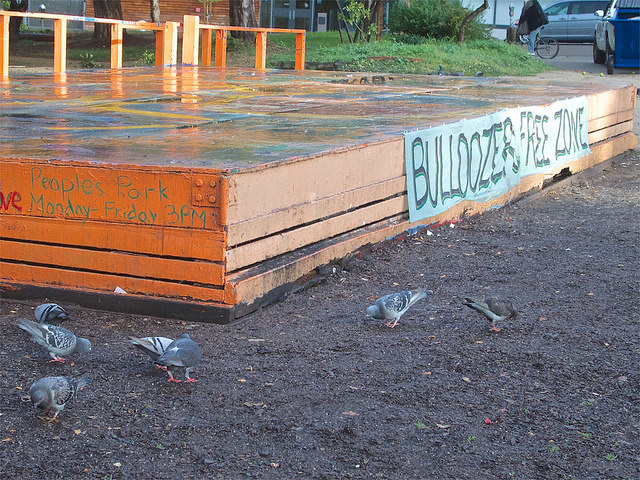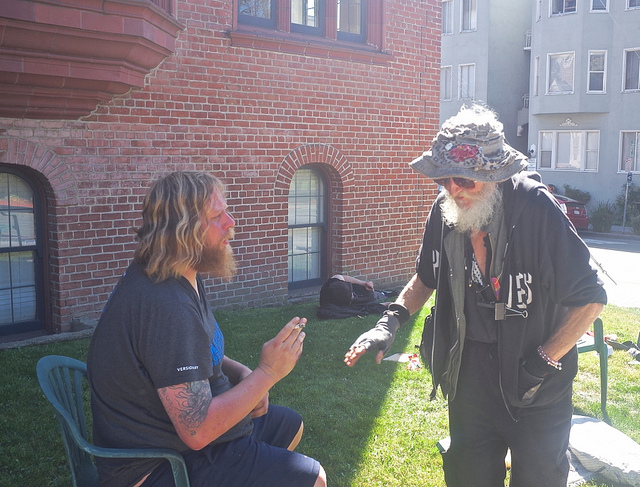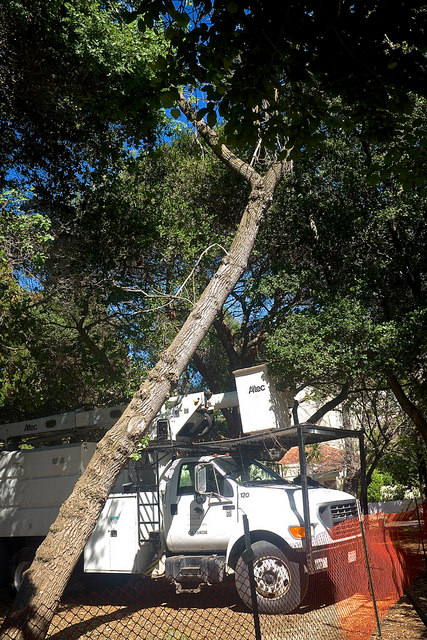Berkeley’s People’s Park Tree-cut Cuts Deep
by Steed Dropout
March 30, 2015
Michael Delacour, the acknowledged founder of Berkeley’s People’s Park, was worried about Cal’s plans for the park.
He sat through a Cal student council meeting (ASUC) before Spring break to warn students that the university was about to take the park, as it had in 1969.
Under attack, Delacour told me, was the People’s Park trees and the People’s Park stage.
Crying wolf over the park runs rampant in the park. Some one(s) at the park will tell you often and often that the university is engaged in battle with the park, has it under surveillance, and is ready to come in to “take back the park.”
All these cries of alarm have some basis in fact.
Mike Delacour warned the students that he had gotten word that Cal would bulldoze the People’s Park Stage, the symbol of the park community and stage to its events.
This possibility is a real possibility. An intrepid local reporter* (not me), was told by a campus spokesperson that the People’s Park stage was a “rat’s nest.” Reason enough to tear it down, clear out the rats, and build a new stage.
The university’s alleged attack on the trees of People’s Park…that story is as multi-layered as a tree. Cal published its plans for treating troubled park trees, naming, and marking, as many as 150 trees. Every Peoples Park tree has a UCB name tag, since 2014, and university aborists know which tree is sick enough to chop. Seventy-seven were marked for possible extinction.
Only ten were felled, last week, but the saws will be back, according to the university’s landscape architect.
Dave Johnson, a UC Berkeley landscape architect, oversaw the sawing last week, as he made friends and educated us all with his deep knowledge of plant biology. “I know that people get upset when trees are cut down,” Johnson told me. “I feel the same way. That’s why I chose my career.”
JUDE CRIED ALL DAY
Park regulars, like Jude and Hate Man, tried to save their favorite Acacia and seemed to have succeeded, but Johnson told me Hate Man’s Acacia will eventually have to go.
Opposition to the university’s, alleged tree attack never materialized. Delacour told me the university launches such “attacks” on the park over Spring break when students are unable to respond. Johnson told me the university cuts trees all over campus on Spring breaks to minimize the danger of falling limbs.
As our photos will show, the pruning/cutting seemed more brutal than it was. When the sick trees were removed and the surviving trees resuscitated with mulch from their felled tree brothers, the UCB tree intervention of Spring break, 2015 leaves, according to Johnson–a “Natural Oak Woodland.”
’70s park tree planters like George Kalmar and Ben Fulcher told me that they purposely planted trees as close together as possible to hide the park from police scrutiny. Johnson told me that although this strategy seemed to endanger the trees, as they competed for survival–that ultimately, the planting strategy of the 70s planters supported the trees’ survival.
*A tip of the hat to Berkeleyside co-founder, Tracey Taylor.
More photos: https://www.flickr.com/photos/berkboy/





